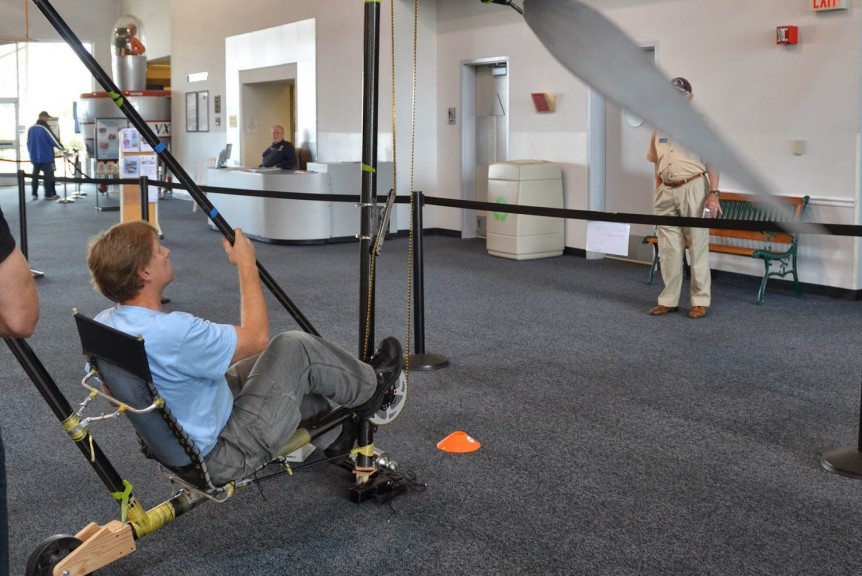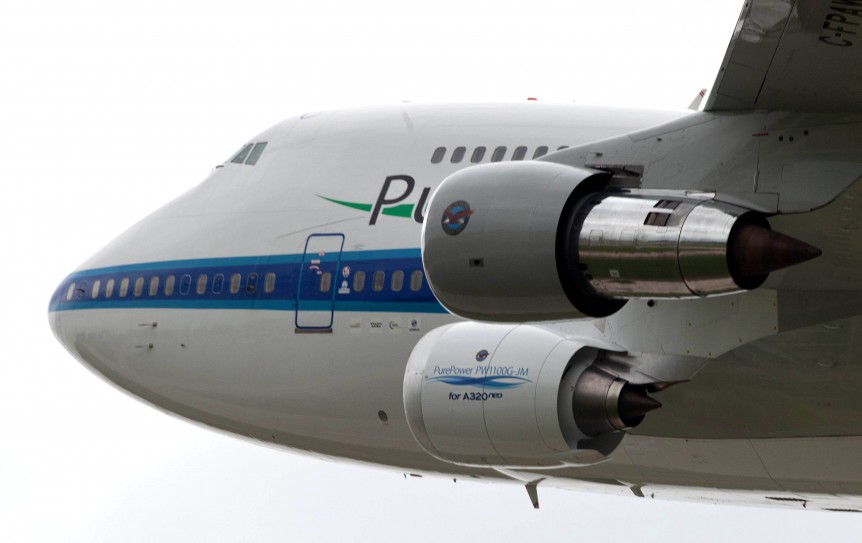COP21, the Congress of Parties 21 – the 21st gathering of nations and organizations working toward an agreement on reducing greenhouse gases, has concluded with what many conclude to be a historic turn from fossil fuels to cleaner, greener means of powering the world’s economy. At a gala “SolutionsCOP21 – Celebrate the Champions Night” at the Grand Palais on the Champs-Élysées in Paris, leaders in demonstrating clean energy solutions were honored and awarded. Globe-straddling solar aviation and electric commuter helicopters showed a few of the environmentally conscientious directions aviation has taken and in which sustainable flight can take flight in the near future. Eraole, Mignet’s Formula Redefined Eraole, with its first motor run at COP21, is a tandem-winged cruiser that will fly on a combination of solar power and biologically-derived algae fuel driving its single electric motor. The 14 meter wings and large horizontal tail provide space for 43 square meters (462.8 square feet) of 24-percent efficient solar cells. These …
An American HPA Takes Flight
Alec Proudfoot made a 233-meter (764-feet), 37-second flight in his DaSH PA (Dead Simple Human-Powered Airplane) on December 4 at Half Moon Bay Airport west of San Francisco. The 33.3 meter (108.27 feet) wingspan (it can be extended to 40 meters, or 131.23 feet) aircraft did well until a weak flange on the vertical tail mount failed. Alec reported his personal state of readiness and some details of the flight in an email to the British Human Powered Flying Club. “…pilot max weight at just above 90 kg (me, out of shape and about 15 lbs. heavier than optimal). “It flew a lot easier than expected (meaning less power required than I thought it would) and handled great. A bit of PIO (pilot-induced oscillation) in the middle of the flight as I sorted out the handling (we slowed the servos way down to avoid moving our delicate control surfaces too fast — but we need to speed them back up …
Flying More Economical, Less Polluting Than Driving?
Ilan Kroo, in a 2014 Electric Aircraft Symposium presentation, showed that a “narrow-body” airliner (for example, the Boeing 737-800) is able to fly one passenger coast-to-coast on 29 gallons of fuel, at about 81 passenger miles per gallon. Driving responsibly, a carpool of four or five in a Prius could show greater operational economy, but take about 40 or more hours to make the trip (and lots of breaks) compared to the five hours in one jump it takes the Boeing. Worse, the same Prius is often stuck in gridlock traffic for short drives with only the driver on board. Even a hybrid’s mileage suffers under such circumstances. Several popular publications have taken up that “meme” in the last week. Nick Stockton, writing in Mother Jones’ environment section, informs his readers that airlines are already competitive with cars on a passenger mile basis, and that because “Fuel economy is hardwired into the airline industry’s DNA,” there could be benefits for …
Farm and Municipal Waste to Bio Jet Fuel
United Airlines has united with two partners, AltAir Fuels and Fulcrum BioEnergy, to fly on sustainable alternative fuels. Think of each flight being cleaner, using what formerly were unusable, land-fill-bound waste products, and certain to make United more sustainable, and flights less costly. Earlier efforts at producing biofuels relied on converting food, such as corn, into fuel, an uneconomical process that raised food prices and often used more energy than it produced in ethanol, for instance. This was not sustainable and didn’t allow economic benefits for its users, so fell into disrepute quickly. Organizations like the United Nations spoke out against taking grains from the poorest among us to make fuels for jetsetters. In their 2009 report, UNEP, the United Nations Environment Program, calculated that up to 34 percent of arable land would be required to produce the fuel necessary to maintain current Powerful firms sometimes take farms from poor communities in third-world countries to produce biofuels, adding human misery …



